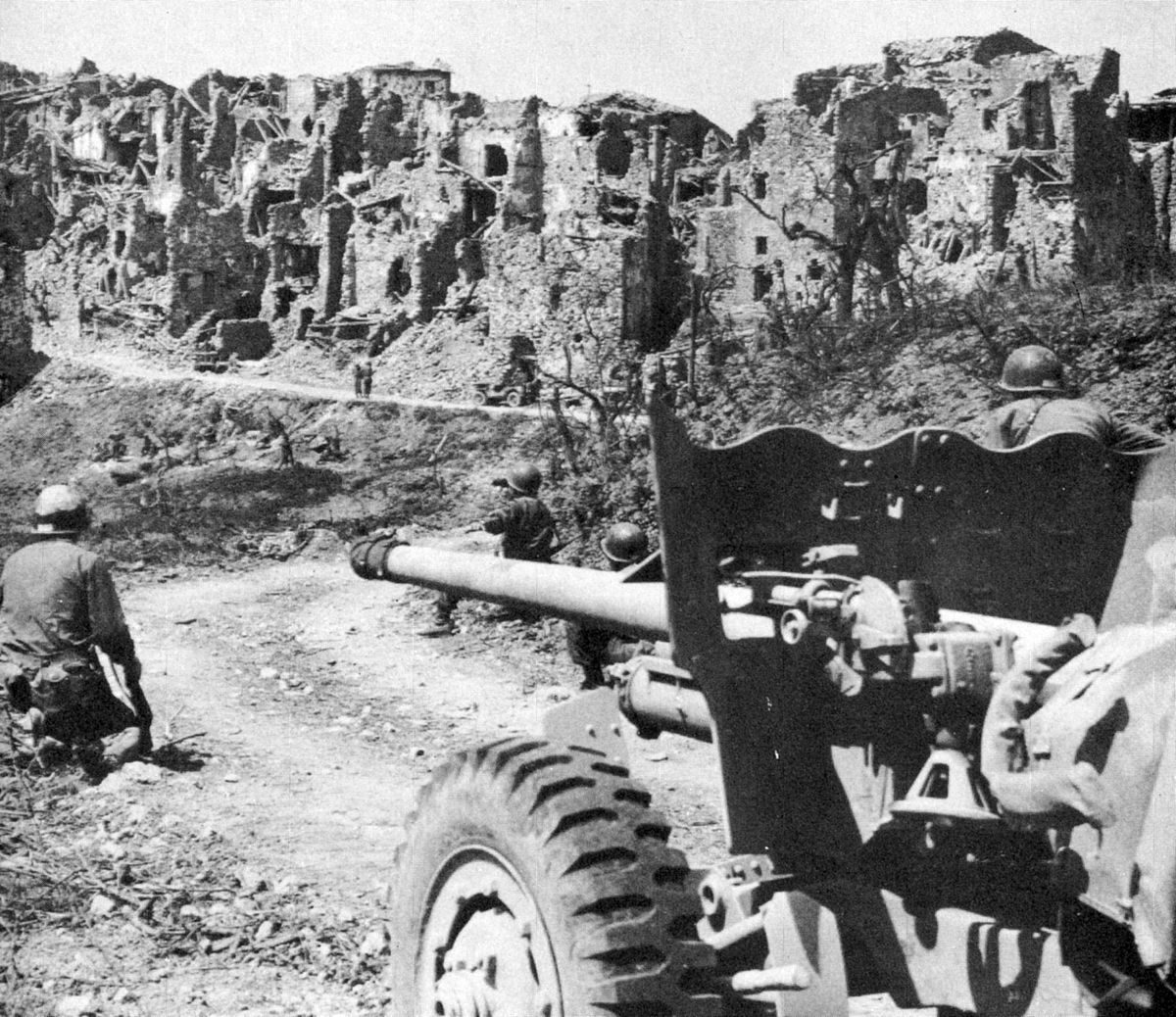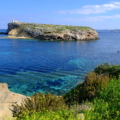When pilgrims arrive at the Abbey of Montecassino, the culmination of the Cammino di San Benedetto, they are greeted by the abbey’s grandeur and serenity—its towering walls bathed in sunlight, perched high in central Italy. Yet few visitors realize how close this remarkable site came to being lost forever in the 20th century. The abbey’s survival owes much to one man: a German officer whose courage and humility defied the chaos of war.
The destruction wrought during World War II is well-documented, yet stories of quiet heroism also endure—moments when individuals risked everything to preserve pieces of our shared cultural legacy. Among these unsung heroes is Lieutenant Colonel Julius Schlegel, a German officer whose extraordinary decision to protect Montecassino’s treasures transcended politics and conflict.
An Unexpected Proposal
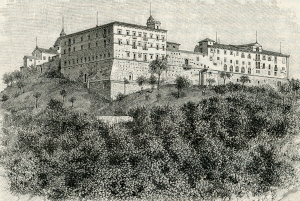
On October 14, 1943, the Benedictine Abbey of Montecassino received an unusual visit. Two German officers—Lieutenant Colonel Julius Schlegel and Medical Captain Maximilian Becker—arrived unannounced to request an urgent meeting with Abbot Gregorio Vito Diamare. Their proposal was as extraordinary as it was improbable: they wished to evacuate the abbey’s treasures, including the relics of Saint Benedict, to a safer location.
The abbot’s immediate reaction was one of suspicion. With Europe’s cultural artifacts being plundered or destroyed, why should the monks trust these officers? Both the Allies and German Field Marshal Albert Kesselring had given assurances that the abbey would not be targeted. Surely its sacred status and deep historical significance rendered it inviolable.
But Schlegel’s motivations were sincere. A devout Catholic and art historian in civilian life, he understood Montecassino’s priceless cultural and spiritual legacy. The abbey—standing atop the Gustav Line, a critical German defensive position—was now perilously close to Allied frontlines following their September landings at Salerno. Its destruction, Schlegel knew, was not a matter of if but when.
The Turning Point
Fate intervened days later when Allied bombing raids shook the surrounding hills. The abbot, now convinced of the abbey’s vulnerability, reluctantly agreed to Schlegel’s plan. His conditions were strict: the treasures would be transported directly to the Vatican under the monks’ supervision. Schlegel accepted without hesitation.
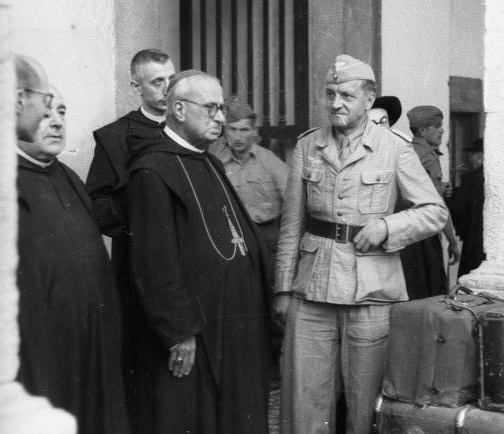
What followed was a monumental logistical effort. Schlegel, aided by Becker, mobilized soldiers and trucks from his own division to carry out the operation. Manuscripts, paintings, sculptures, and relics were carefully packed under the watchful eyes of the Benedictine monks. Suspicion still lingered among Schlegel’s superiors, who accused him of theft, but testimonies from the monks—and Field Marshal Kesselring’s reluctant approval—allowed the evacuation to proceed.
Saving Priceless Treasures
Thanks to Schlegel’s initiative, more than 70,000 volumes and 1,200 manuscripts were saved, including ancient texts by Seneca, Ovid, and Cicero. Paintings by Renaissance masters like Leonardo da Vinci, Titian, and Tintoretto were transported alongside these manuscripts. Montecassino had also served as a refuge for artworks relocated from Naples’ Capodimonte Museum, further adding to the collection’s significance.
The abbey’s most sacred possessions—the relics of Saint Benedict and his twin sister, Saint Scholastica—were also carefully evacuated. Alongside the treasures, monks and local civilians seeking safety were escorted away.
Tragedy Confirmed
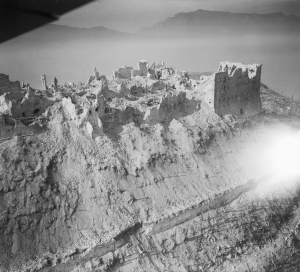
Despite these efforts, Schlegel’s fears became reality on February 15, 1944, when Allied forces bombed Montecassino. The abbey—founded by Saint Benedict of Nursia in the 6th century CE—was reduced to rubble in hours. Crucially, investigations confirmed that no German troops had occupied the site at the time of the bombing, contradicting earlier Allied intelligence.
The Battle of Montecassino would rage across four brutal offensives, resulting in tens of thousands of casualties. The destruction of the abbey remains one of World War II’s most controversial episodes, later acknowledged as a mistake by the United States in 1969.
Rebuilding History, Honoring Sacrifice
Julius Schlegel’s foresight ensured not only the survival of the abbey’s treasures but also its eventual restoration. Among the items he saved were the architectural blueprints for Montecassino itself. These plans became vital for its meticulous reconstruction, completed in 1955. Today, the abbey stands as a symbol of resilience and remembrance—its stones and manuscripts testifying to both human fragility and fortitude.
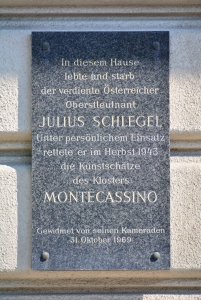
The monks’ gratitude toward Schlegel was profound. When they asked how they might reward him, his request was characteristically modest: a single Mass celebrated in his name. The abbot, however, insisted on honoring him with a Latin scroll attesting to his actions. This document, along with the monks’ testimonies, would later help clear Schlegel’s name at the Nuremberg Trials, where he was acquitted of wrongdoing.
A Legacy of Quiet Courage
Julius Schlegel’s story reminds us that even amid humanity’s darkest moments, individual acts of bravery can safeguard what is most valuable—our shared heritage. The Abbey of Montecassino stands not only as a spiritual center but also as a monument to Schlegel’s quiet heroism.
His memory endures in every manuscript, relic, and work of art he helped save—a lasting legacy of courage, humility, and preservation. As the abbey’s official records note, Schlegel’s actions speak to a truth that transcends war: true greatness lies not in conquest but in the resolve to protect what makes us human.
For more information, visit the official Abbey of Montecassino website:
Montecassino Foundation



